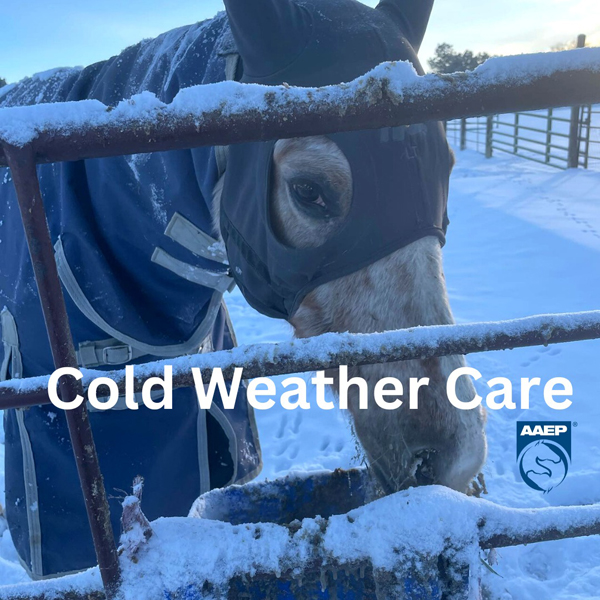Cold Weather Care
Dr. Sarah Reuss, Chair of the AAEP’s Horse Owner Education Committee
As severe winter weather marches across the U.S. and Canada, Dr. Sarah Reuss, chair of the AAEP’s Horse Owner Education Committee and a horse owner herself, shares the following advice for keeping your horse safe during this extreme weather event.
1. While lots of hay is ideal for horses to eat to keep warm, now is NOT the time to introduce a round bale if they’ve never had access to one before. It may be more work, but keep throwing them their normal hay source, just more frequently.
2. Similarly if your horse is not used to being locked up in a stall, now is NOT the time. The stress of a major change and the decreased activity can be risk factors for colic. Be sure they have access to shelter, hay, and drinkable water but let them move around if they choose to do so.
3. Horses that are thin, older, or fully body clipped are those most at risk in extreme weather.
4. Well fitting blankets are great but be sure horses do not get sweaty under them or that the blankets don’t soak through if snow or rain covered. Wet, cold and covered is worse than dry, cold and naked.
5. Some of the highest risk times are when the temperatures hover right around freezing, as that can result in sleet/freezing rain/ice that can make horses wet and therefore colder. Slippery footing is a concern, too.
6. If using electric water heaters, be sure they are functioning and not shocking horses. Take your gloves off and stick your hand in the water (briefly!!!) to double check.
7. “Trick” your horses into consuming extra water by flavoring a bucket, adding electrolytes to their meals, or soaking their meals in warm water. If you’ve never fed beet pulp before, be sure to add LOTS of warm water. Dry beet pulp is a common source of choke.
8. Tips of ears can be at risk for frostbite. Putting a jumper-style ear bonnet or other ear cover can protect them from wind chills.











